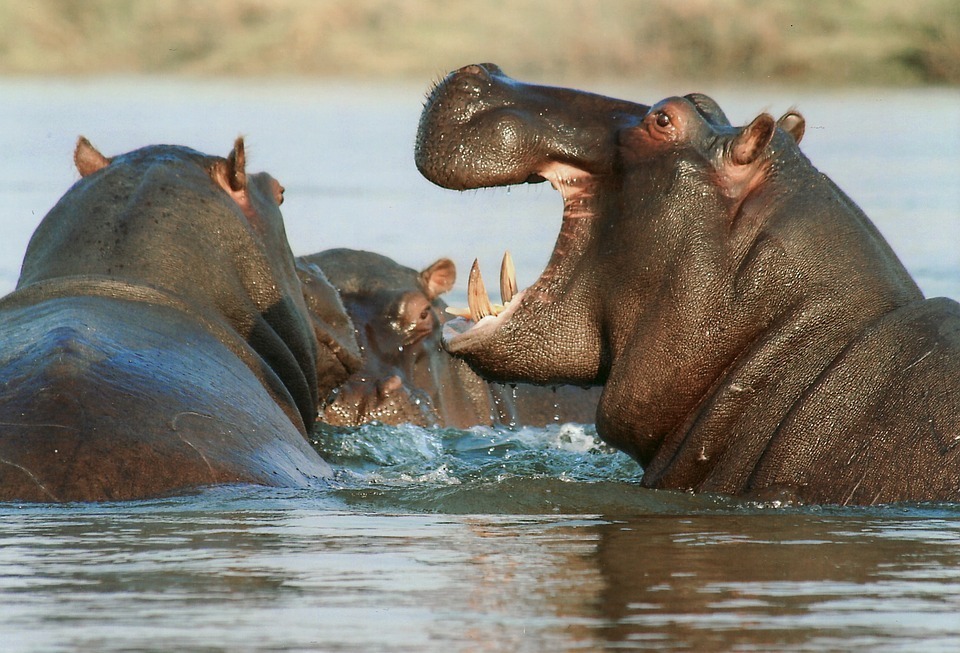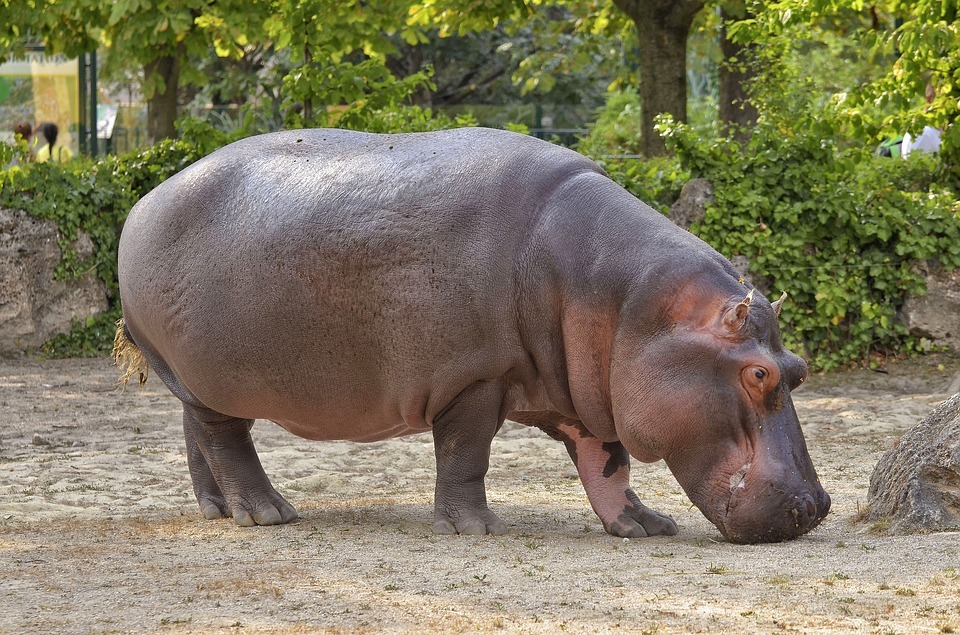The Hippopotamus, also known as Hippo, Common Hippopotamus, or River Hippopotamus, is a large semiaquatic mammal common to Sub-Saharan Africa. It is one of the only two existing species in the family Hippopotamidae, the other species being the Pygmy Hippopotamus. Its name came from the ancient Greek term of “river horse.” Today, the Hippopotamus is considered the heaviest extant artiodactyl and the third largest land mammal on Earth.
Despite their resemblance with pigs and other even-toed ungulates, Hippopotamidae species are cetaceans, which means species under this family are related to dolphins, whales, porpoises, and many more.
This species was first described by Carl Linnaeus, the father of modern taxonomy, back in 1758. Five subspecies of Hippopotamus are recognized and described based on the morphological and geographical differences.
- Great northern hippopotamus or Nile hippopotamus
- East African hippopotamus
- Cape hippopotamus or South African hippopotamus
- West African hippopotamus or Tchad hippopotamus
- Angola hippopotamus
The International Union for Conservation of Nature (IUCN) Red List stated that there had been a 7 to 20% decline in populations for 10 years. In 29 countries within its range, it was estimated that there only exists between 125,000 to 148,000 individuals. Even if the exploitation and poaching of Hippopotami are illegal, these remain the main reason for the population decline. Illegal hunting usually happens in unprotected areas. Because of this, the IUCN Red list categorized the species as Vulnerable.
Its seven levels of scientific classification are as follows:
Kingdom: Animalia
Phylum: Chordata
Class: Mammalia
Order: Artiodactyla
Family: Hippopotamidae
Genus: Hippopotamus
Species: H. amphibius
The physical characteristics of a Hippopotamus
Being it as the third largest land mammal, a Hippopotamus weighs between 1,300 and 3,200 kg, stands from 150 to 154 cm tall, and measures from 209 to 505 cm in length, including its tail of about 35 cm in length. It has a skin color of purple-gray or slate, with brownish-pink hues around its eyes and ears. Its body is covered with rare amount of thin hair, except for the thick bristle-like hair on the tail and head. Its epidermal skin layers are very thin, which makes them highly vulnerable to wounds during fighting.
It lacks sweat and scent glands. Therefore, an adult Hippopotamus relies on mucous glands that secrete a thick, oily layer of red fluid. People have thought of this as a mixture of blood and sweat, earning it the nickname of “blood sweat.” But in reality, the red fluid is a combination of norhipposudoric and hipposudoric acids.
The distribution and habitat of Hippopotami
These mammals are commonly found in Africa, particularly in Angola, Benin, Botswana, Central African Republic, Guinea Bissau, Ghana, Chad, Sierra Leone, Senegal, and Somalia, South Africa, Uganda, Tanzania, Zambia, Zimbabwe, and other countries. They are semi-aquatic animals that frequent shallow rivers, swamps, and lakes. The water must be deep enough (approximately 2 meters deep) for the mammal to submerge its body in since it likes keeping its skin moist and cool.
The behavior of a Hippopotamus
Hippopotami are considered social beasts, hanging out in groups referred to as bloats, pods, schools, or sieges. A school usually consists of 10 to 30 individuals, while some groups have as many as 200 members. Regardless of the group size, a dominant male is always expected to lead them.
They are loud, aggressive, and highly dangerous. They emit loud grumbles, wheezes, snorts that reach 115 decibels. Their powerful tusks and teeth are used to fight off threats and other predators, including humans. According to BBC, these beasts kill an estimated 500 every year in Africa.
Even though deemed as semi-aquatic mammals, Hippopotami cannot swim. However, they can easily glide through water by pushing themselves off other objects. According to National Geographic, they can stay underwater for 5 minutes without coming up for air.
They are polygamous mammals, with bulls mating with several females in social groups. The breeding season usually occurs during the dry season, and the birth-giving season occurs during the rainy season. The gestation period lasts for 324 days, which only yields one offspring.
The diet of a Hippopotamus
These huge animals primarily feed on grasses, small shoots, and reeds. The grazing lasts for four to five hours each night, enough to cover 3 to 4 km in circular patterns. Around 40kg of food contributes to their body weight. On rare occasions, they also consume dead animals nearby resting pools.


